From Blue Whale Skull to Narwhal Tusks, Behind-the-Scenes at the Smithsonian Marine Mammals Collection
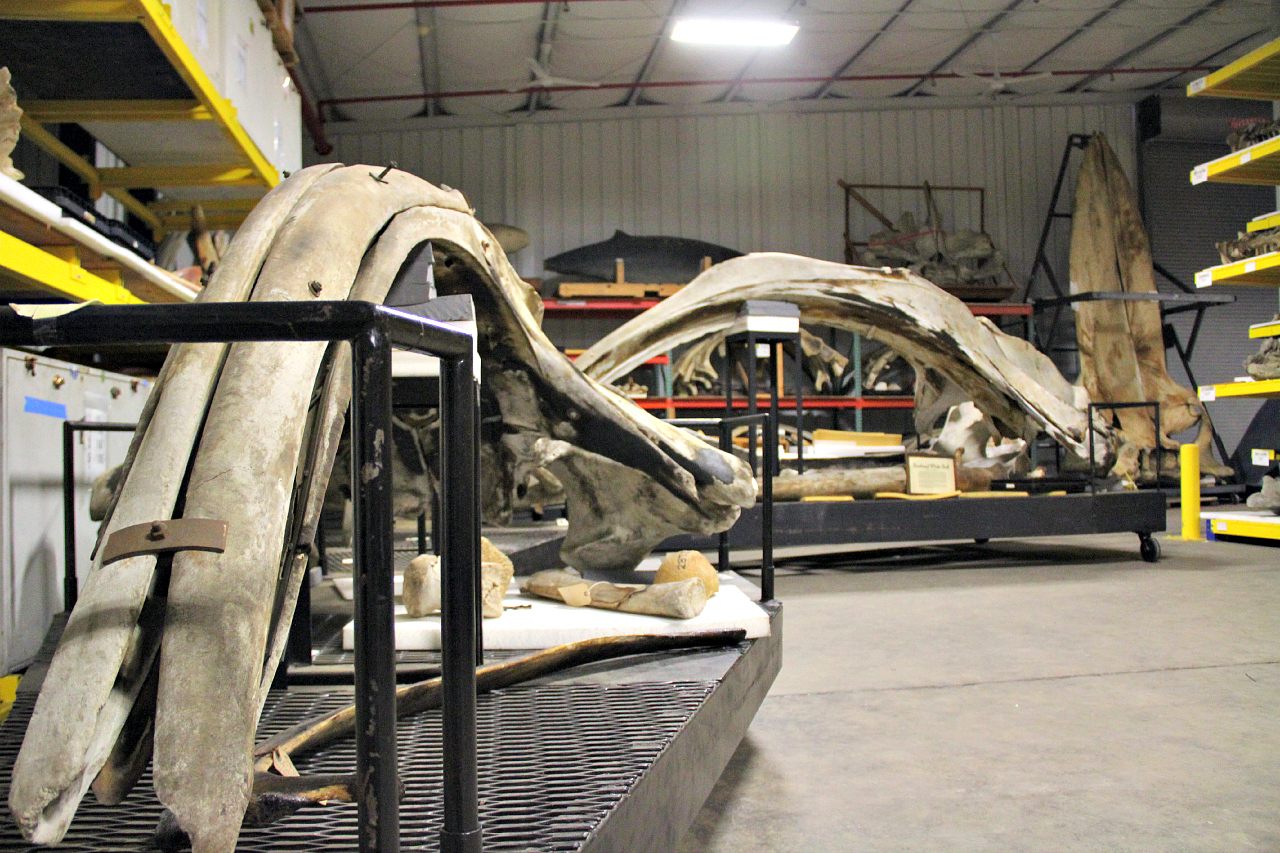 The Marine Mammals Collection at the Museum Support Center in Suitland, Maryland (all photographs by Dylan Thuras/Atlas Obscura)
The Marine Mammals Collection at the Museum Support Center in Suitland, Maryland (all photographs by Dylan Thuras/Atlas Obscura)
As the world’s largest research collection dedicated to the planet’s most massive mammals, the Smithsonian’s Marine Mammal Collection has two cavernous warehouses to contain everything from a blue whale skull to a drawer full of narwhal tusks. Part of the Museum Support Center in Suitland, Maryland, the collection dates to the 1850s, and includes thousands of specimens related to marine life, its greatest emphasis on the cetaceans — the intelligent, mysterious, and disappearing whales, porpoises, and dolphins.
Recently, Atlas Obscura visited the incredible space, led by Marine Mammals Collection Manager Charley Potter. In addition to overseeing the osteological and wet specimens, along with other essential archive material, Potter regularly journeys around the East Coast to contextualize this historic knowledge with the state of cetaceans today. When the animals wash up on the shore, he is often there to examine or bring them back to the Museum Support Center. As he explained as we stood in the dolphin necropsy lab where these animals are dissected, knowing what killed an animal, what injuries it survived, and keeping track of the sudden frequency of beached cetaceans is essential to conservation. This encompasses historic analysis as well, such as skin samples from 1940s Alaskan bottlenose dolphins that are being studied to compare current viruses to past epidemics.
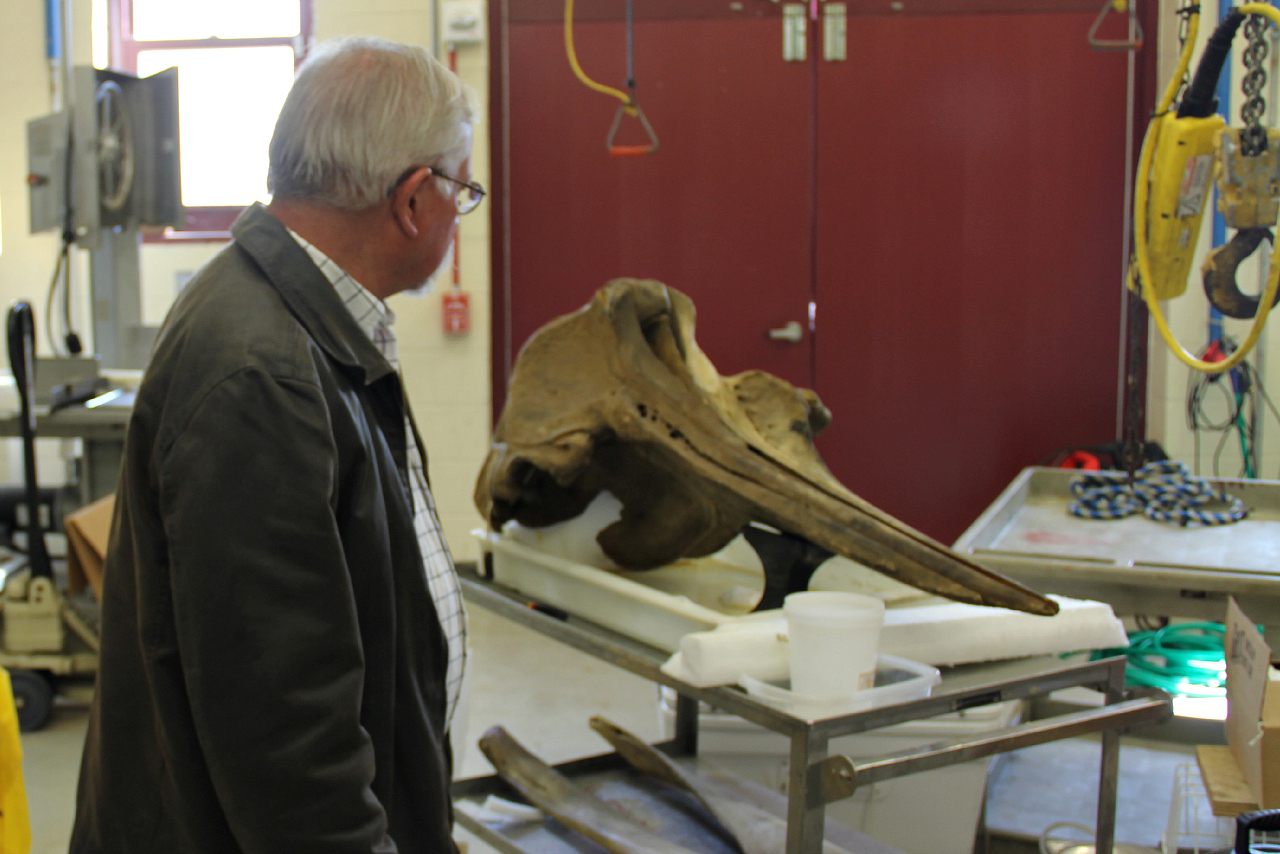 Charley Potter in the dolphin necropsy lab with a bottlenose dolphin skull
Charley Potter in the dolphin necropsy lab with a bottlenose dolphin skull
Potter explained that when a whale’s habitat is lost, they tend to go away forever. “We have a good chance of losing these whales, these unique forms, before we even realize they’re there,” he said. This goal of conservation has long been a major focus of the collection — back in 1871 its founder Spencer Fullerton Baird helped establish the U.S. Commission of Fish and Fisheries, a major step towards not treating the ocean as an endless resource. Yet overall these specimens help to better understand animals that are still, in large part, enigmas. Potter opened a drawer full of narwhal tusks as an example. Once thought to be like antlers, they’re now considered sensitive and sensory, able to detect things like alterations in water salinity. Currently the Smithsonian is participating in making a complete genome of the narwhal to unravel some of the secrets of its spiral tusk.
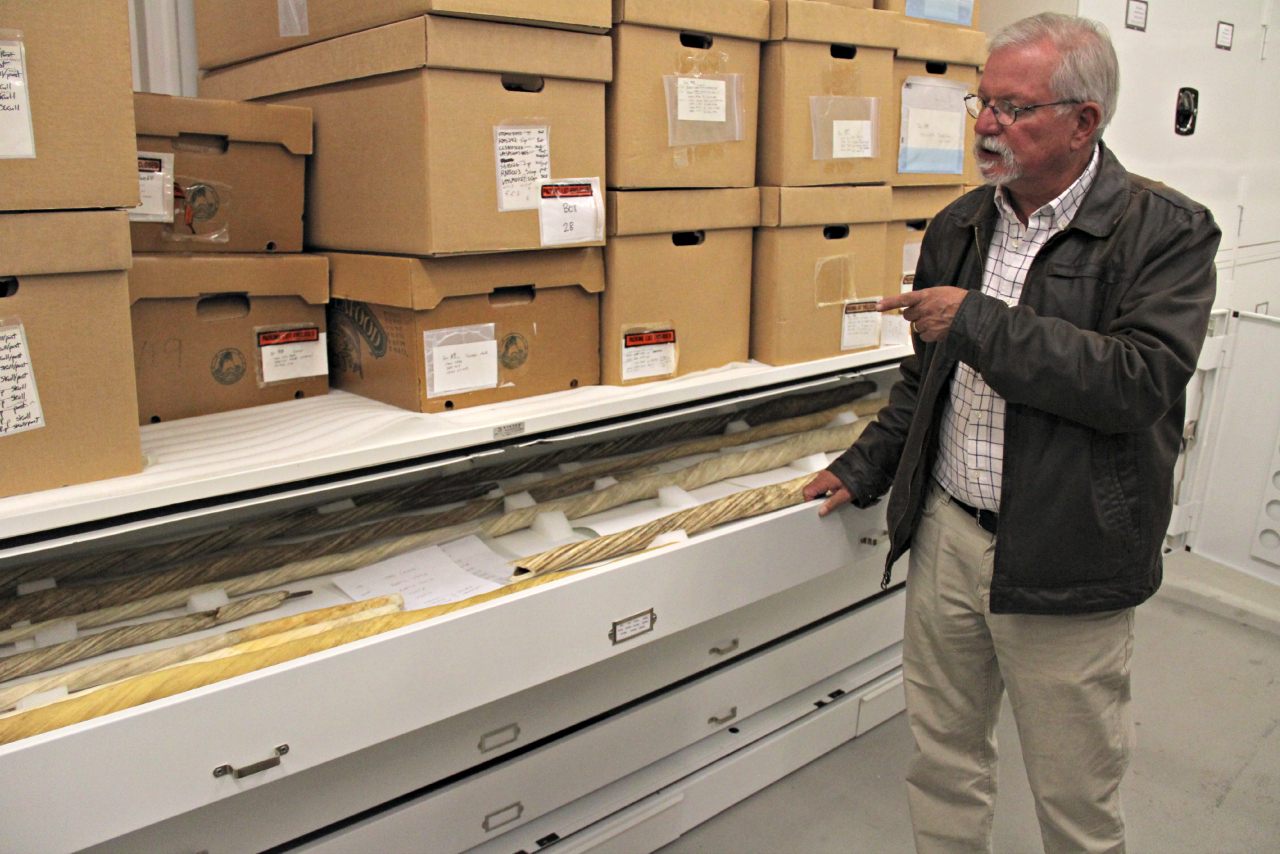 Drawer of narwhal tusks
Drawer of narwhal tusks
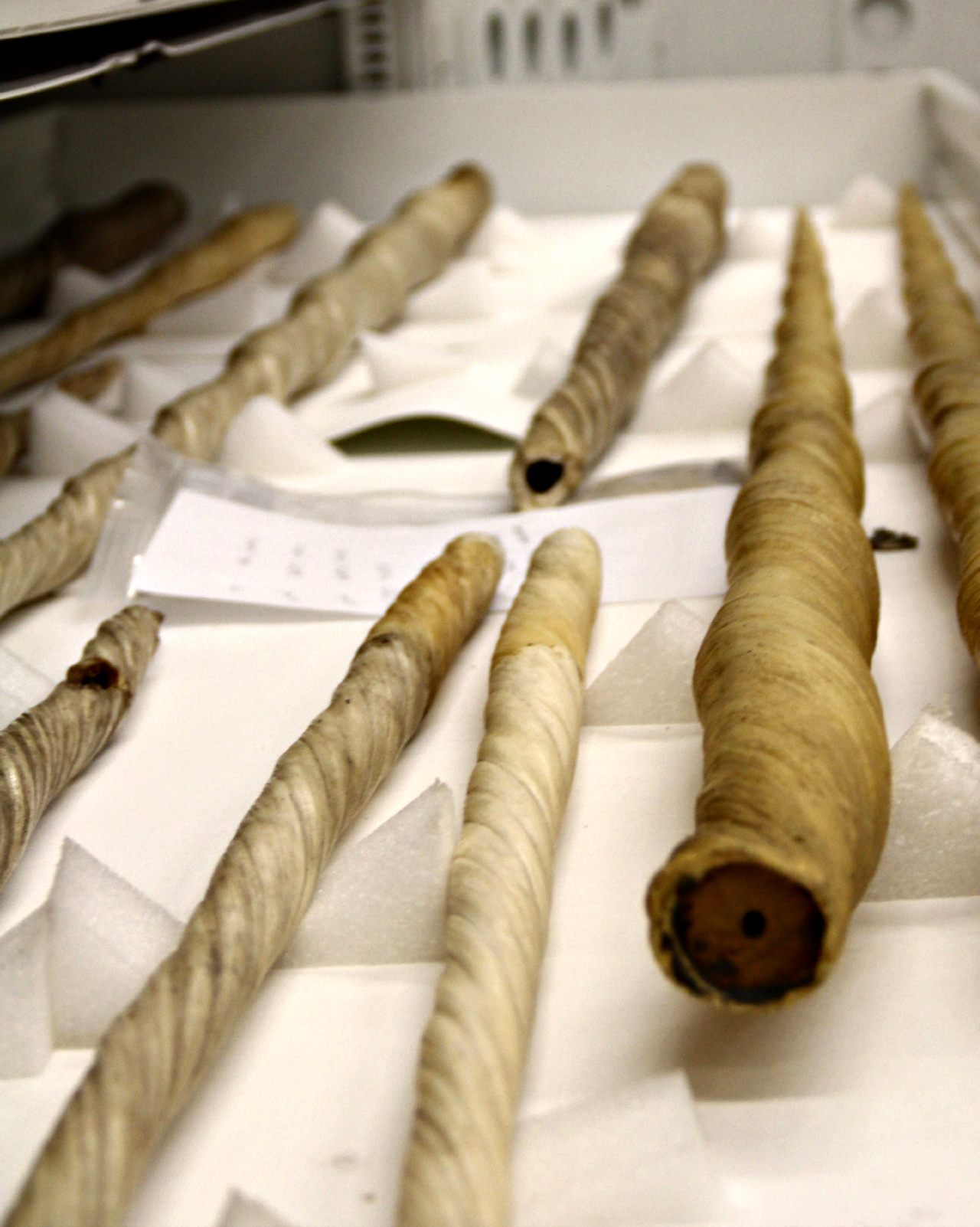 Detail of the narwhal tusks
Detail of the narwhal tusks
Just below the narwhal tusks was another drawer, this one lined with specimens of baleen. Used for filter-feeding by whales, ships once scoured the ocean for the toothy substance, selling the material for use in everything from umbrellas to corsets. Before the availability of plastic or fiberglass, baleen sometimes commanded a higher price than whale oil. Since it grows like hair and nails, researchers are now able to use baleen as a sort of time capsule, showing through isotope analysis what the whales were eating, the tropic levels, and other ecological points on a timeline stretching over two centuries. “We really are getting an idea of what the environment was like,” Potter said.
While fishing is still a major concern for many species, there are also troubling phenomena like the beaked whales that seem to be getting zapped during tests of anti-sub warfare, washing ashore when exposed to sonar exercises reflecting sound on the deep sea scattering layer. Combining studies of the shapes of the dense bones in their skulls in the collection to look at their acoustic profile may eventually help save these whales.
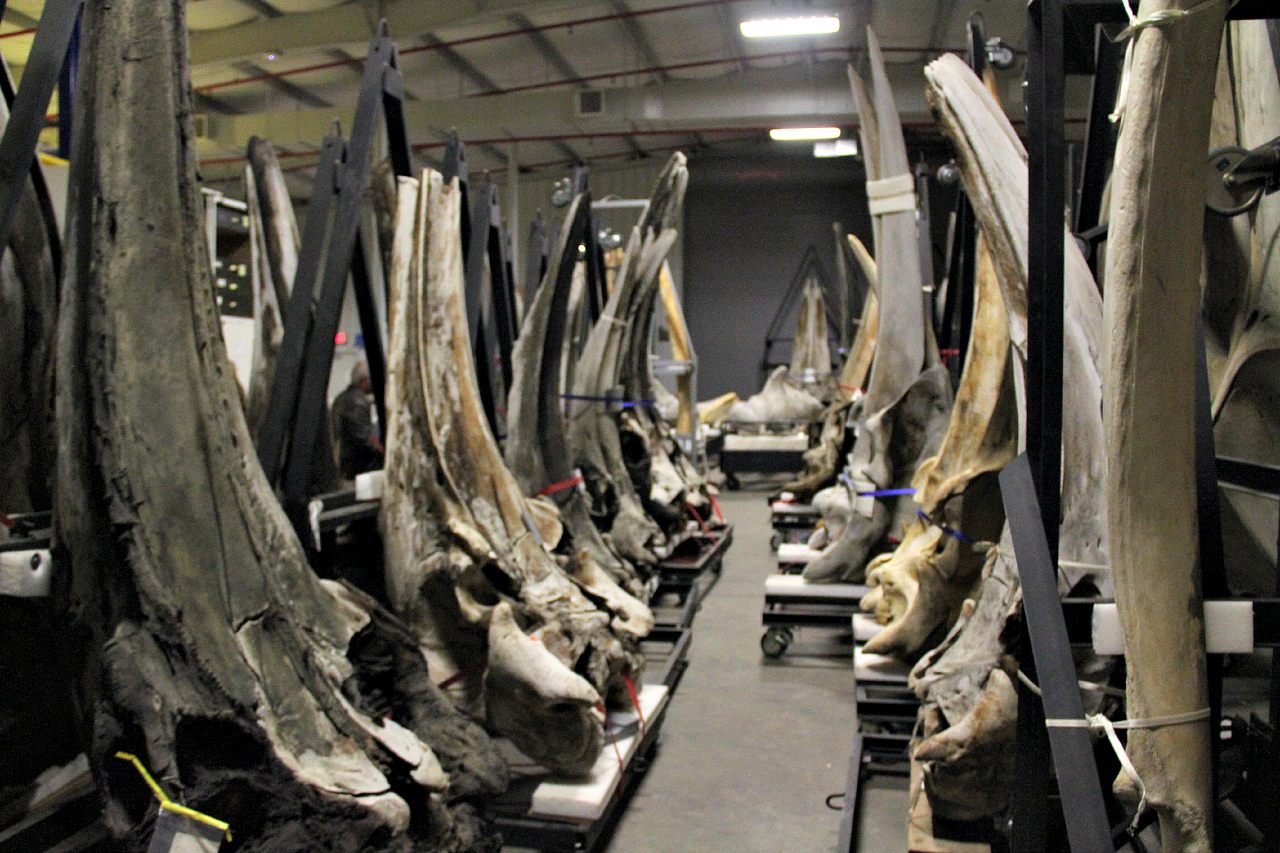 Whale skulls
Whale skulls
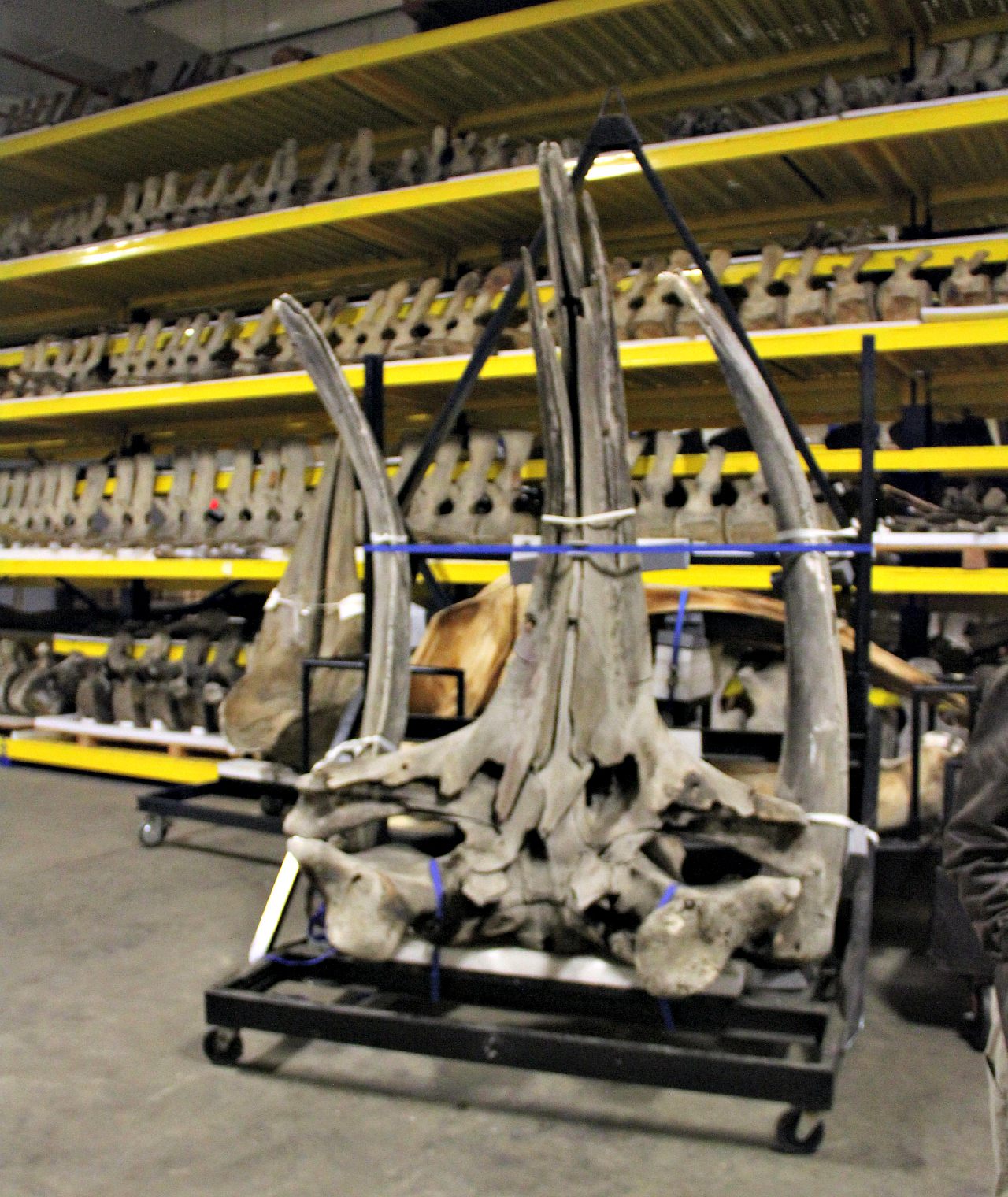 Whale skulls & spines
Whale skulls & spines
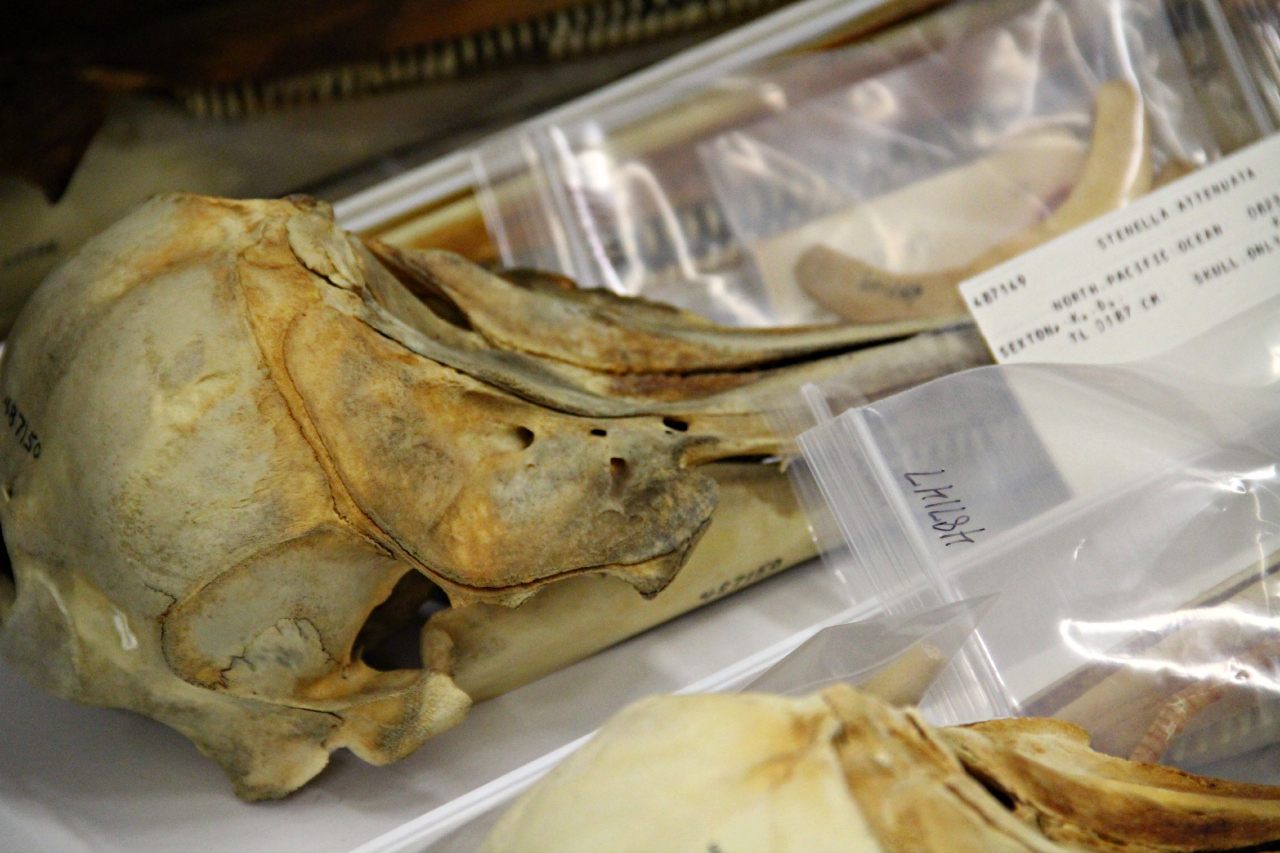 Dolphin skulls
Dolphin skulls
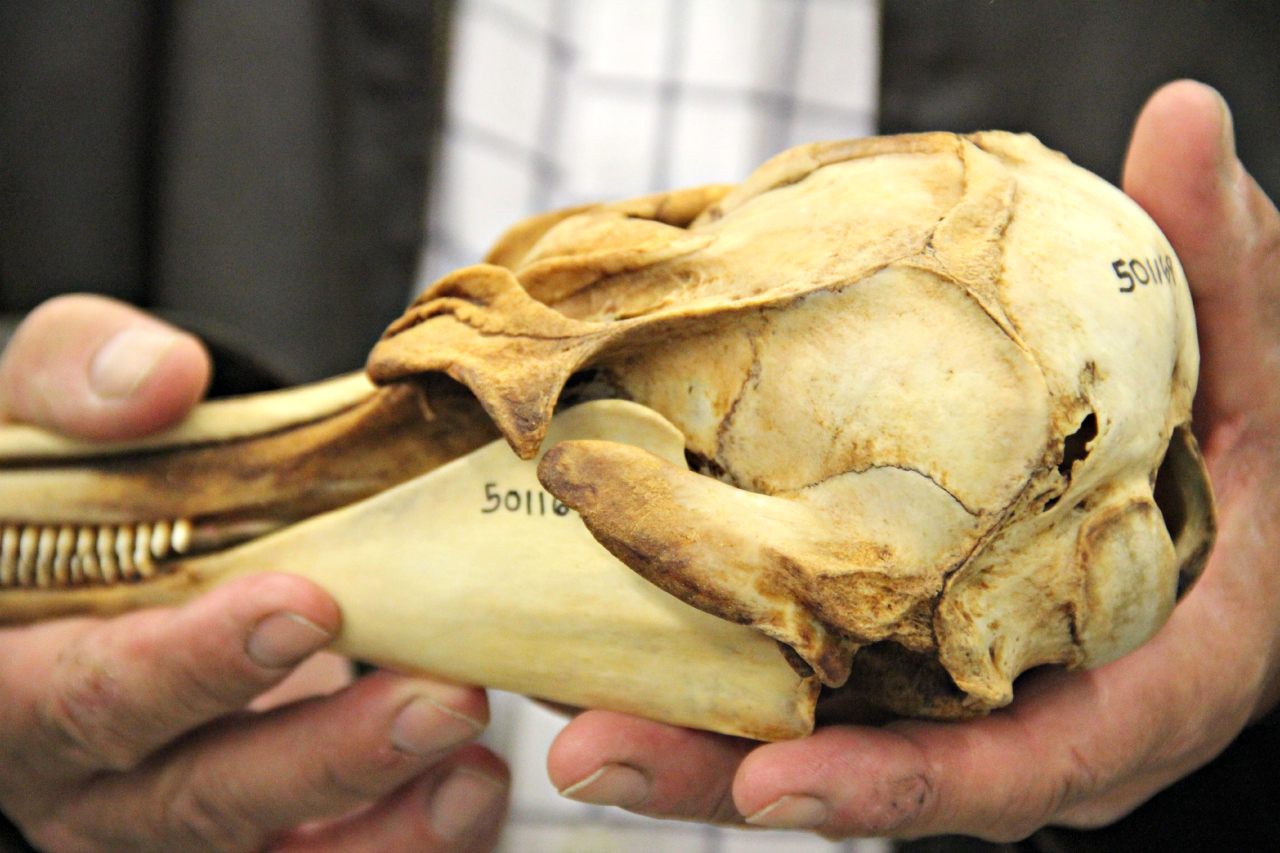
Walking through this specimen storage is an incredible experience in biodiversity and the plights of conservation, from the multitudes of small dolphin skulls captured in fisheries, to the peaking jaws of the whales lined up like a mountain range, to the colossal spines arranged on shelves going up to the ceiling. The most impressive object in the collection for its size and scarcity is the blue whale skull, dwarfing the other specimens along one wall. Back in 1904, representatives from the Smithsonian including Chief Osteologist and Head of Exhibits Frederic A. Lucas traveled to Hermitage Bay in Newfoundland, to accomplish what no natural history team had done before — take a cast of a blue whale. They got one, stretching 78 feet, through a whaling company, and with gargantuan amounts of burlap and plaster of Paris molded each part of the whale’s body. The completed cast went on display at the St. Louis Exposition and the skeleton itself went to the Smithsonian.
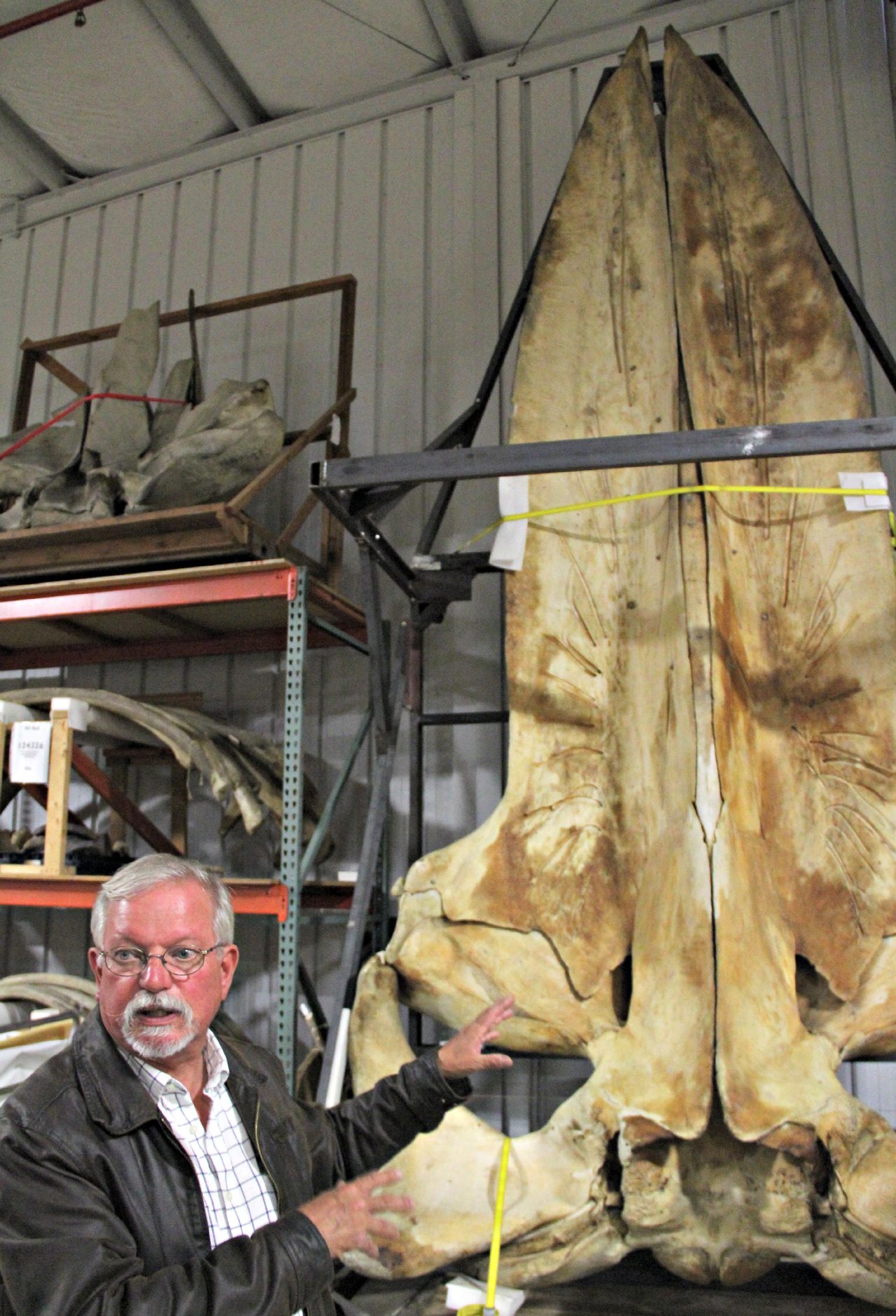 The blue whale skull
The blue whale skull
Just beneath the skull is one of the most recent acquisitions, stretched out on the floor from its formidable bow jaw to tapering tail bones. These are the remains of Tips the North Atlantic right whale, brought in at the end of last year. Like Phoenix, a still-living right whale who is represented as a model in the Smithsonian Institution National Museum of Natural History, Tips was tracked by marine biologists for much of his life before dying of entanglement in 2010. It’s an unfortunately common cause of death for the right whales, where their jaw or fins can get fatally pinned by ropes and other fishing equipment. (Phoenix actually got her name after escaping what seemed like a deadly entanglement in 1997, which left a scar on her mouth that’s included in the museum model.) The distinctive white scarring on his tail flukes that gave Tips his name, and helped his remains be identified, connecting three decades of life history to the bones. With under 500 right whales known to be in existence, such data can help this most-endangered of whales from extinction.
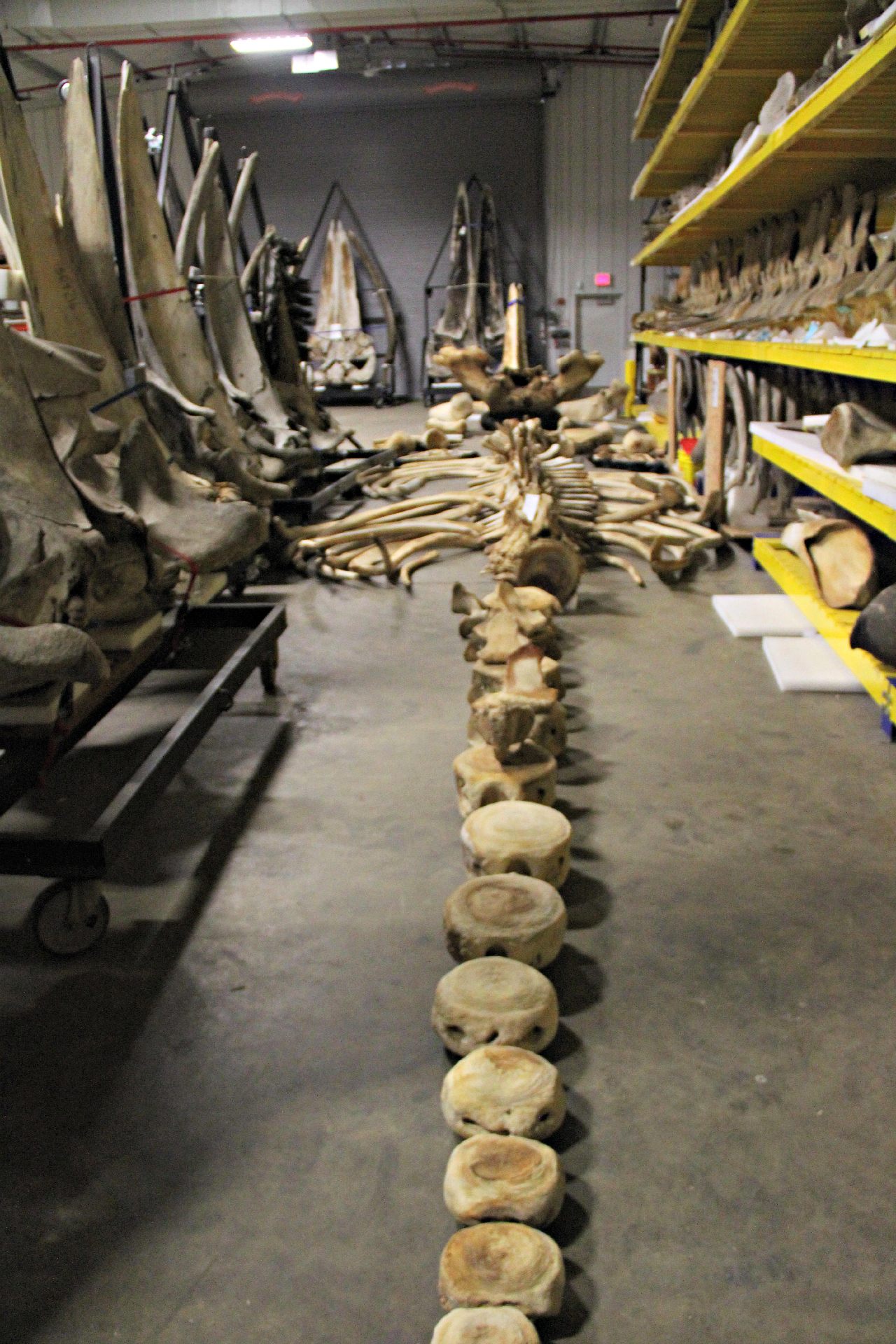 The bones of Tips the right whale
The bones of Tips the right whale
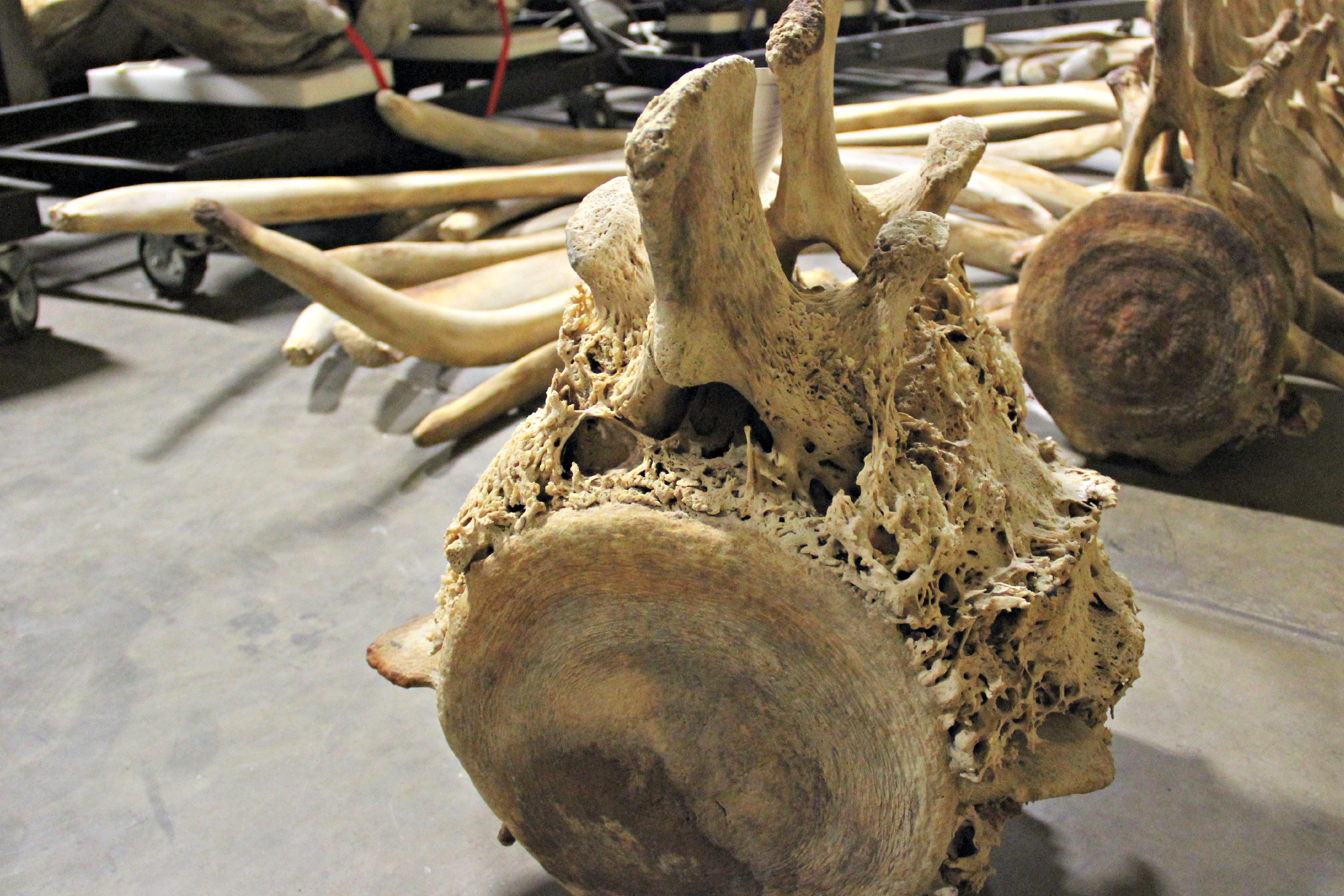 Osteoporosis in one of Tips’ bones that suggests survival of a previous injury
Osteoporosis in one of Tips’ bones that suggests survival of a previous injury

Even with all of the hopeful research the collection allows, there is still something melancholy about many of the specimens, most of which were sourced from fisheries, entanglements, and strandings. Yet through the collection, the life stories embedded on the bones can offer data invaluable to the survival of these species. Recent projects include 3D scanning of collection data and continued collaboration among scientists to make this taxonomic collection a resource for genomics, morphology, and conservation. And then there is the less definable and staggering experience of walking beneath a blue whale skull, connecting these rarely-seen magnificent creatures to our greater biodiversity.
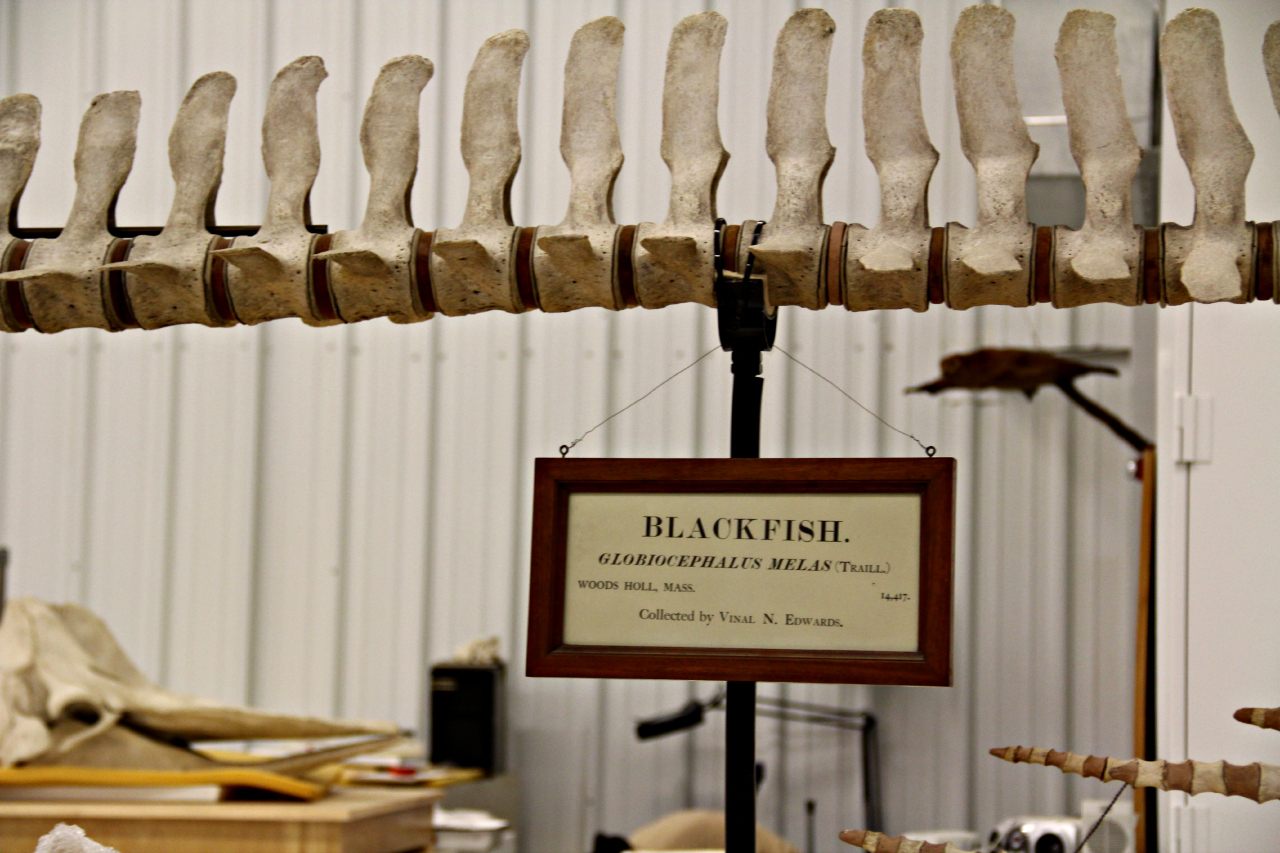
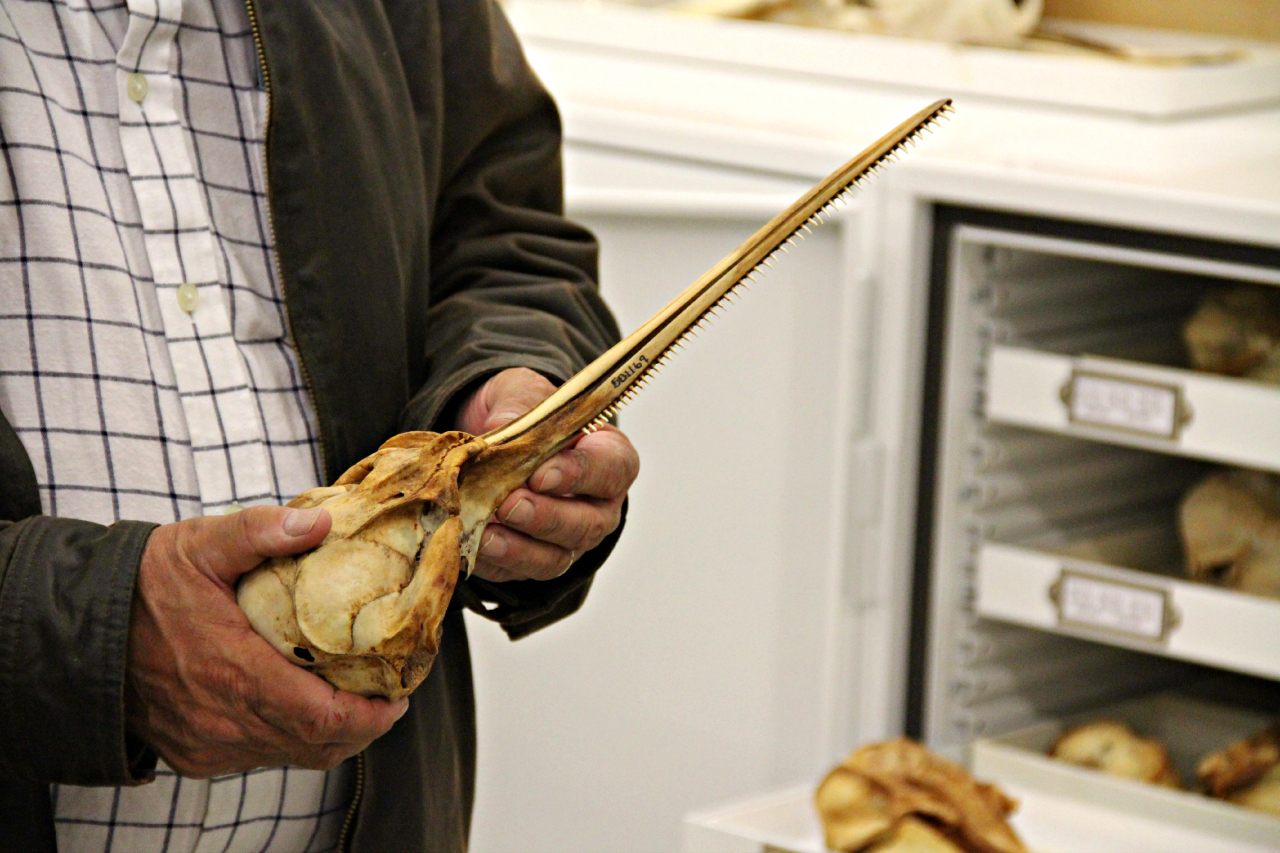
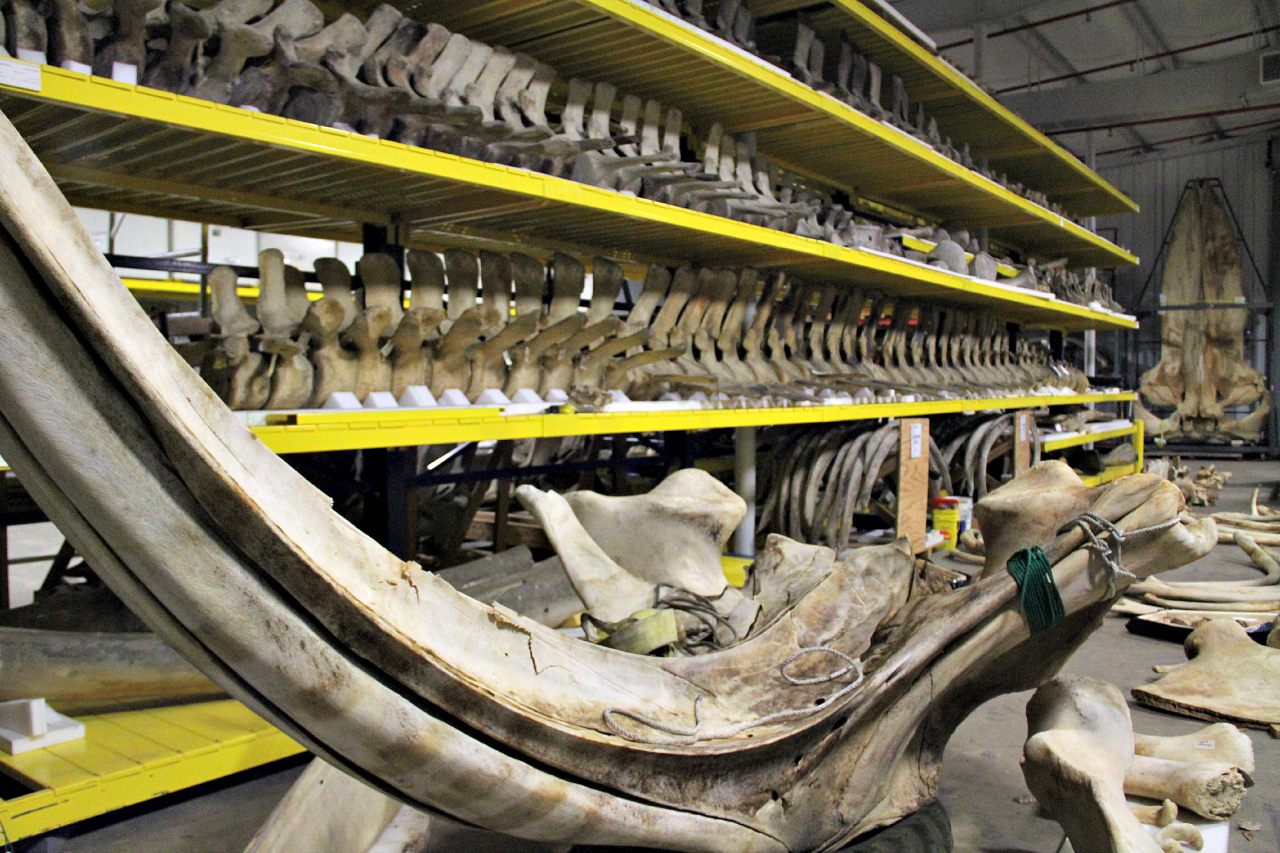
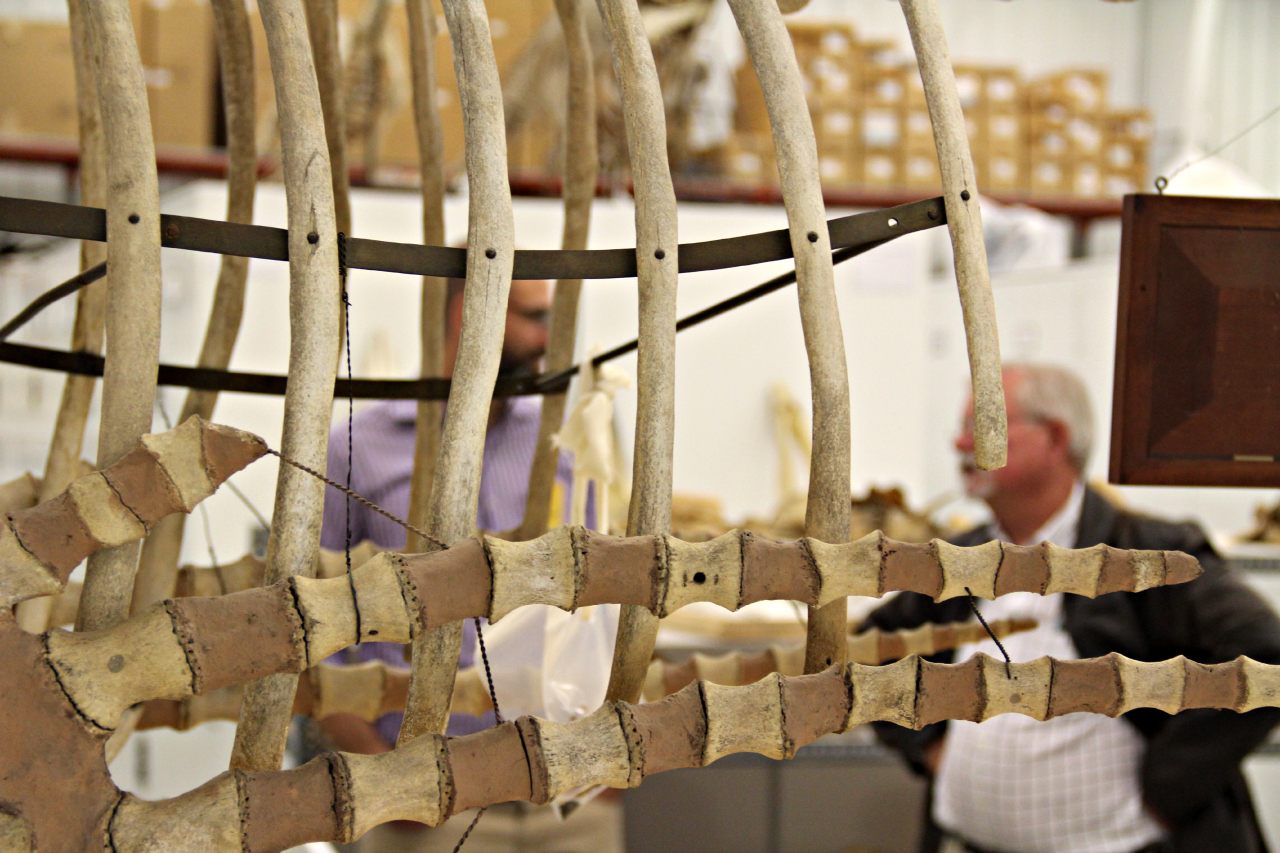





























Follow us on Twitter to get the latest on the world's hidden wonders.
Like us on Facebook to get the latest on the world's hidden wonders.
Follow us on Twitter Like us on Facebook